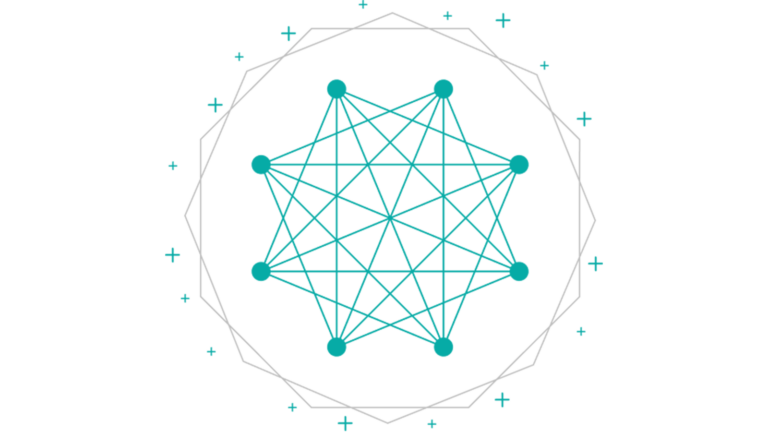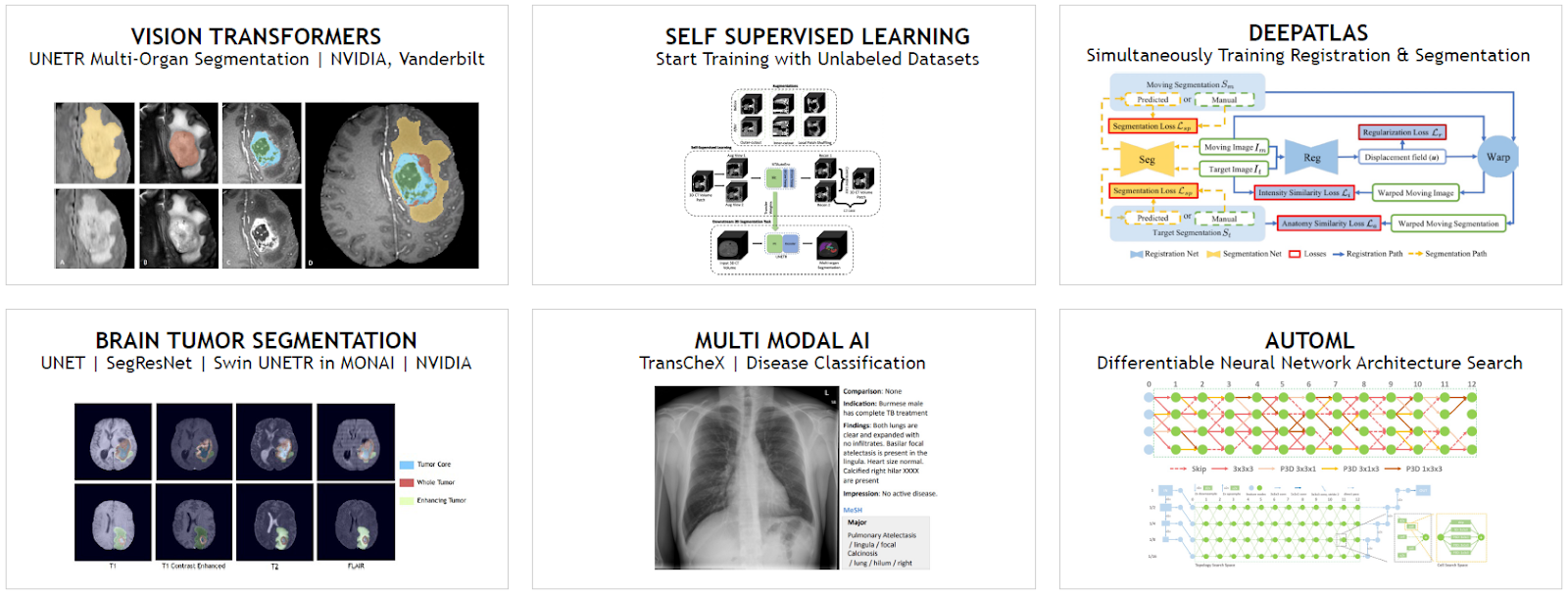 MONAI is fueling open innovation for medical imaging with tools to accelerate image annotation, train state-of-the-art deep learning models, and create AI applications that drive research innovation.
MONAI is fueling open innovation for medical imaging with tools to accelerate image annotation, train state-of-the-art deep learning models, and create AI applications that drive research innovation.
It’s never been more important to put powerful AI tools in the hands of the world’s leading medical researchers. That’s why NVIDIA has invested in building a collaborative open-source foundation with MONAI, the Medical Open Network for AI. MONAI is fueling open innovation for medical imaging by providing tools that accelerate image annotation, train state-of-the-art deep learning models, and create AI applications that help drive research breakthroughs.
Developing domain-specific AI can be challenging, as a lack of best practices and open blueprints creates various impediments from research and development to clinical evaluation and deployment. Researchers needed a common foundation to accelerate the pace of medical AI research innovation.
The core principle behind creating Project MONAI is to unite doctors with data scientists to unlock the power of medical data. MONAI is a collaborative open-source initiative built by academic and industry leaders to establish and standardize the best practices for deep learning in healthcare imaging. Created by the imaging research community, for the imaging research community, MONAI is accelerating innovation in deep learning models and deployable applications for medical AI workflows.
Helping guide MONAI’s vision and mission, an Advisory Board and nine working groups, led by thought leaders throughout the medical research community. These focused working groups allow leaders in those fields to concentrate their efforts and bring effective contributions to the community. The working groups are open for anyone to attend.
MONAI is an open-source PyTorch-based framework for building, training, deploying, and optimizing AI workflows in healthcare. It focuses on providing high-quality, user-friendly software that facilitates reproducibility and easy integration. With these tenants researchers can share their results and build upon each other’s work, fostering collaboration among academic and industry researchers.
The suite of libraries, tools, and SDKs within MONAI provide a robust and common foundation that covers the end-to-end medical AI life cycle, from annotation through deployment.
Medical imaging annotation and segmentation
MONAI Label is an intelligent image labeling and learning tool that uses AI assistance to reduce the time and effort of annotating new datasets. Utilizing user interactions, MONAI Label trains an AI model for a specific task, continuously learns, and updates the model as it receives additional annotated images.
MONAI Label provides multiple sample applications that include state-of-the-art interactive segmentation approaches like DeepGrow and DeepEdit. These sample applications are ready to use out of the box to quickly get started on annotating with minimal effort. Developers can also build their own MONAI Label applications with creative algorithms.
Client integrations help clinicians, radiologists, and pathologists interact with MONAI Label applications in their typical workflow. These clinical interactions are not dormant, as experts can correct annotations and immediately trigger training loops to adapt the model to input on the fly.
MONAI Label has integrations for 3D Slicer, OHIF for Radiology and QuPath, Digital Slide Archive for Pathology. Developers can also integrate MONAI Label into their custom viewer by using server and client APIs, which are well abstracted and documented for seamless integration.
Domain-specific algorithms and research pipelines
MONAI Core is the flagship library of Project MONAI and provides domain-specific capabilities for training AI models for healthcare imaging. These capabilities include medical-specific image transforms, state-of-the-art transformer-based 3D Segmentation algorithms like UNETR, and an AutoML framework named DiNTS.
With these foundational components, users can integrate MONAI’s domain-specialized components into their existing PyTorch programs. Users can also interface with MONAI at the workflow level for ease of robust training and research experiments. A rich set of functional examples demonstrates the capabilities and integration with other open-source packages like PyTorch Lightning, PyTorch Ignite, and NVIDIA FLARE. Finally, state-of-the-art reproducible research pipelines are included for self-supervised learning, AutoML, vision transformers for 3D, and 3D segmentation.

Deploying medical AI to clinical production
87% of data science projects never make it into production. Several steps are involved in crossing the chasm between a model and a deployable app. These include selecting the correct DICOM datasets, preprocessing input images, performing inference, exporting the results, visualizing the results, and further applying optimizations.
MONAI Deploy aims to become the de-facto standard for developing packaging, testing, deploying, and running medical AI applications in clinical production. MONAI Deploy creates a set of intermediate steps where researchers and physicians can build confidence in the techniques and approaches used with AI. This makes an iterative workflow, until the AI inference infrastructure is ready for clinical environments.
MONAI Deploy App SDK enables developers to take an AI model and turn them into AI applications. Available on GitHub, MONAI Deploy is also building open reference implementations of an inference orchestration engine, informatics gateway, and a workflow manager to help drive clinical integration.
Advancing medical AI
The world’s leading research centers, including King’s College London, NIH National Cancer Institute, NHS Guy’s and St. Thomas’ Trust, Stanford University, Mass General Brigham, and Mayo Clinic are building and publishing using MONAI. Integration partners like AWS, Google Cloud, and Microsoft are all standing up MONAI on their platforms. To date, MONAI has grossed over 425,000 downloads and has a community of over 190 contributors who have published over 140 research papers.
The groundbreaking research using MONAI is fueled by the growth of its open community of contributors. Together, these researchers and innovators are collaborating on AI best practices in a platform that spans the full medical AI project lifecycle. From training to deployment, MONAI is bringing the healthcare community together to unlock the power of medical data and accelerate AI into clinical impact.
To learn more about MONAI and get started today, visit MONAI.io. A library of tutorials and recordings of MONAI bootcamps are also available for MONAI users on the MONAI YouTube channel.


